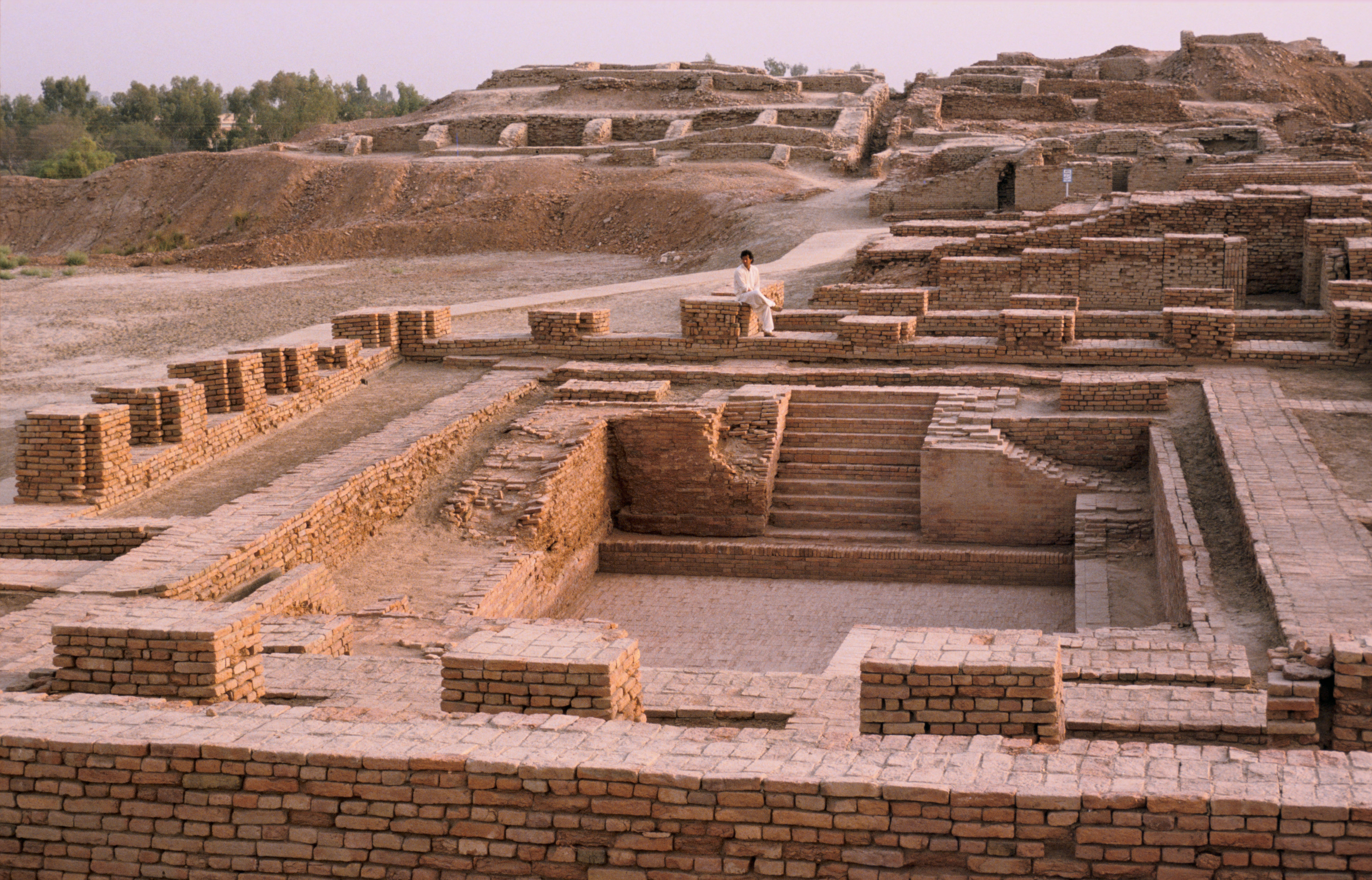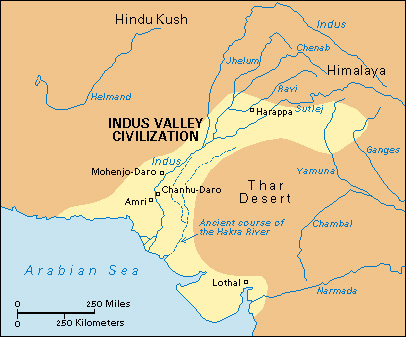Indus Valley civilization was one of the world’s first great civilizations. It began to flourish about 4,600 years ago and was centered in the vast river plains of what are now Pakistan and northwestern India. This civilization is sometimes called the Harappan civilization. It is named after the Pakistani town of Harappa, where archaeologists first discovered evidence of the culture. 
Development of the Indus civilization.
The Indus civilization developed out of farming and herding communities that carried on trade with one another from around 7000 B.C. About 2800 B.C., the communities became more unified culturally. In some places, people began laying out carefully planned walled cities. By around 2600 B.C., larger cities had developed. The cities traded with one another and shared religious beliefs. In time, the Indus civilization grew to cover most of present-day Pakistan and parts of what are now Afghanistan and northern India. The heart of the civilization was the vast flood plain of the Indus and Hakra rivers. The Hakra River (also known as the Ghaggar River or Sarasvati River) is now dried up. It once flowed east of—and parallel to—the Indus River, in what are now India and Pakistan. The civilization developed a standardized system of weights and measures. It also created a system of writing that scholars have not managed to decipher. 
In the early 1800’s, British scholars learned that people had found ancient artifacts buried in huge earthen mounds in the region. But it was not until the 1920’s that archaeologists began excavating these sites and realized that they contained the remains of cities from a previously unknown civilization. Hundreds of Indus sites have been found.
Indus culture.
The Indus people planned their cities carefully. They built many of their buildings on mud-brick platforms that protected the buildings from seasonal floods. Houses were made of baked or sun-dried brick. Many houses had two stories. Most homes had a bathing area that was supplied with water from a nearby public well or from a well in the courtyard of the house. In larger communities, each house was connected to an elaborate city-wide drainage system. Other structures include large buildings that may have been used as public meeting places.
The Indus people traded extensively with one another. City people traded with nearby agricultural communities and with distant mining and other areas. Goods traded probably included cotton, lumber, grain, and livestock. For transport, people used pack animals, river boats, and ox carts. The Indus people also traded with other civilizations, including cultures in central Asia and Mesopotamia and along the Persian Gulf.
Indus artisans produced a variety of useful and decorative objects. They used copper and bronze to make tools, mirrors, pots, and pans. Bone, shell, and ivory were used to create ornaments, tools, game pieces, and inlay for furniture. Indus artisans also crafted silver and gold utensils and ornaments, as well as ornaments made of stoneware and earthenware. Indus sculptors made clay figurines of animals and people, probably for use in religious rituals. They also made small limestone figures that may represent gods or important people.
The most unusual objects found at Indus sites include square stone seals engraved with Indus writing and animals that may have been clan symbols. Indus script has also been found on pottery and other objects. The Indus people buried their dead, often in wooden coffins along with pottery vessels and personal objects.
Decline of the Indus civilization.
From about 1900 to 1700 B.C., the Indus civilization gradually broke up into smaller cultures, called late Harappan cultures and post-Harappan cultures. The breakup was partly caused by changing river patterns. These changes included the drying up of the Hakra River and changes in the course of the Indus River. The river changes disrupted agricultural and economic systems. Many people left the cities of the Indus Valley region. However, some aspects of Indus art, agriculture, and possibly social organization continued in the smaller cultures. Some of these aspects became incorporated into another civilization that began developing throughout the region about 600 B.C.
See also Mohenjo-Daro.
